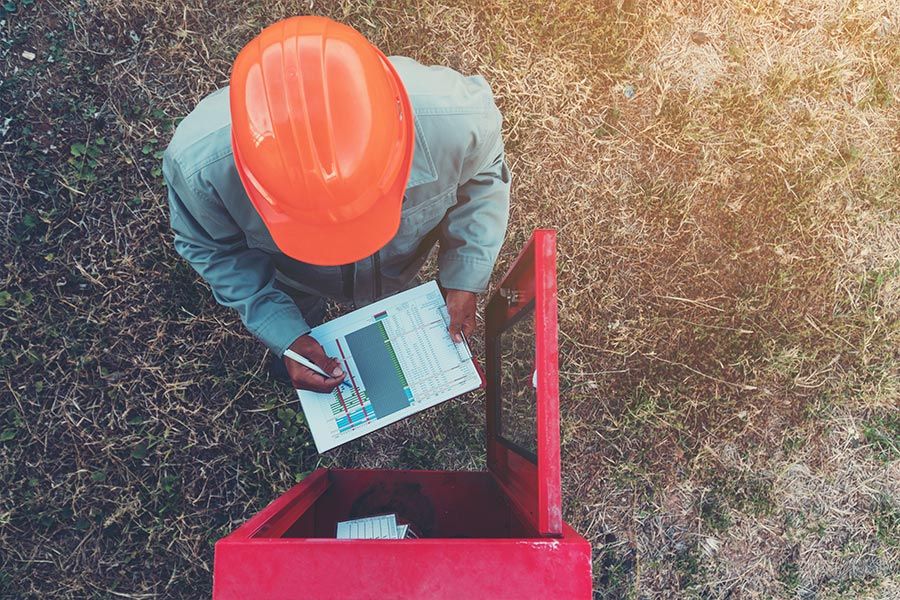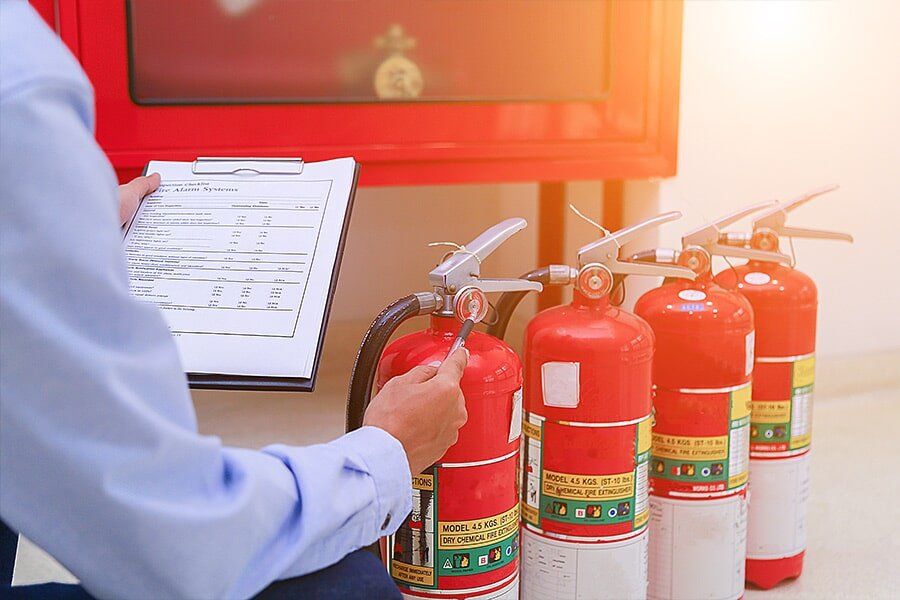East-West Fire Services, Townsville – What We Do
East-West Fire Services, based at Garbutt, provides all-important fire protection services for residents, businesses and mine sites throughout North Queensland.
We have been called in to fit Fire Suppression systems all over Australia, as well as to mine sites in Papua New Guinea.
You can count on East-West to take care of your fire protection measures—not just because of our renowned expertise but also thanks to our level of commitment to fire safety.
We are on-call to respond whenever our customers need us… 24/7.
East-West Fire Services, Townsville – What We Do
East-West Fire Services, based at Garbutt, provides all-important fire protection services for residents, businesses and mine sites throughout North Queensland.
We have been called in to fit Fire Suppression systems all over Australia, as well as to mine sites in Papua New Guinea.
You can count on East-West to take care of your fire protection measures—not just because of our renowned expertise but also thanks to our level of commitment to fire safety.
We are on-call to respond whenever our customers need us… 24/7.
Your Fire Protection Experts
Our fire protection and suppression systems are your best plan for improving fire safety at your premises. We sell, service and install fire suppression systems
You can purchase any fire equipment you need directly from us without retailer margins. We also service fire safety equipment, including fire extinguishers, alarm panels, and emergency lights. In addition, we Test and Tag electrical equipment.
Staff training is a key component to complete your fire protection measures. Our popular trainers are certified fire safety experts. They can quickly skill up fire wardens and teach your staff the safest ways to deal with fires, as well as how and when to use fire extinguishers.
Give us a call today to get fire protection in order at your premises.
Fire Equipment Servicing
You have every right to feel nervous if your fire protection equipment hasn’t been serviced lately. Regular servicing ensures that you can rely on it in case of emergency. We service all fire safety gear.
Fire Equipment Sale
Buy your fire protection equipment directly from East-West Fire Services without paying unnecessary retail margins. You’ll find reliable fire prevention and suppression products from quality brands such as FPA, QTec, Ansul, Sandvik, Chubb, and Flamestop.
Fire Suppression Systems & Mining
East-West Fire Services has been called in to set up fire suppression systems all over Australia, as well as overseas. We have the experience when it comes to fire suppression for vehicles, buildings and mine sites.
Fire Safety Training
A fire warden is responsible for monitoring fire safety equipment and leading fire drills in preparation for evacuation action. We can train your employees, especially fire wardens, on the use of any fire protection equipment.
Electrical Testing
As a business owner, you are responsible for making sure that your electrical equipment is safe to use. We provide Test and Tag services that allow you to better manage your responsibilities in this regard.
Passive Fire
Passive fire protection (PFP) includes fire-rated building materials and fire retardants. Passive means it doesn’t rely on triggers, such as smoke detectors, or grabbing a fire extinguisher. Ask us today about PFP for your premises.
Frequently Asked Questions
Do I need a fire extinguisher in my building?
You need at least one extinguisher in a commercial premises or public meeting place, according to Australian Standards 2444. It also specifies that an extinguisher should be placed at every 20 walkable metres for fires that belong to Class E (electrical), and at every 15 walkable metres for Class A (textiles, wood, paper). Fire extinguishers should also be serviced every 6 months.
Which fire extinguisher do I need?
A fire extinguisher designed to put out flames from paper or wood burning could have a disastrous effect if used on a fire in the kitchen. Never use water on an oil fire. The burning oil will likely explode. For that reason, you’ll find a variety of extinguishers to match fires involving different materials. These are the classes used to categorise the fire types:
- Class A – ordinary combustibles
- Class B – flammable liquids
- Class C – flammable gases
- Class D – combustible metals
- Class E – electrical fires
- Class F – cooking fats & oils
For Class A, these fire extinguishers would be effective:
- Powder ABE
- Water
- Foam
- Wet chemical
For Class B:
- Powder ABE
- CO2
- Foam
For Class C:
- Powder ABE
For Class D:
- Only special purpose extinguishers
Class D fires are less common, as an intense amount of heat is needed for combustible metals, such as aluminium, magnesium and titanium, to ignite.
For Class E:
- CO2
- Powder ABE
For Class F:
- Wet chemical fire extinguisher
Fire blankets are also recommended for extinguishing burning cooking oils and fats.
You can also get extinguishers in various sizes to suit the scale of the potential hazard.
We will be happy to help with choosing a suitable fire extinguisher for your facility. Feel free to give us a call today.
What should I do with an old fire extinguisher?
Fire extinguishers are considered dangerous goods. You can’t simply throw them out like general rubbish. Please refer to this website and phone to check.
What is emergency lighting?
Emergency lights are used to indicate the location of exits in the event of emergencies. Batteries provide power to the lights during outages. Have your emergency lighting tested and serviced regularly.
What does a fire blanket do?
Fire Blankets are used to extinguish small fires, specifically Class F fires involving cooking oils or fats. Wrapping a fire blanket around a person whose clothes are burning is quick and effective. Fire blankets are made from a layer of fire-retardant film, sandwiched between 2 layers of woven glass fibre fabric. They smother fire, depriving it of oxygen. They are not designed for reuse and should be disposed of after use, then replaced.
Important Information
New legislation states that all homes must have photoelectric interconnected smoke alarms installed by 1 January 2027. With interconnected alarms, when one alarm sounds, all alarms sound, giving you early warning of any emergency and extra time to escape. The legislation requires that all smoke alarms comply with Australian standard 3786-2014 and pre-existing smoke alarms be replaced with interconnected smoke alarms.
Frequently Asked Questions
Do I need a fire extinguisher in my building?
You need at least one extinguisher in a commercial premises or public meeting place, according to Australian Standards 2444. It also specifies that an extinguisher should be placed at every 20 walkable metres for fires that belong to Class E (electrical), and at every 15 walkable metres for Class A (textiles, wood, paper). Fire extinguishers should also be serviced every 6 months.
Which fire extinguisher do I need?
A fire extinguisher designed to put out flames from paper or wood burning could have a disastrous effect if used on a fire in the kitchen. Never use water on an oil fire. The burning oil will likely explode. For that reason, you’ll find a variety of extinguishers to match fires involving different materials. These are the classes used to categorise the fire types:
- Class A – ordinary combustibles
- Class B – flammable liquids
- Class C – flammable gases
- Class D – combustible metals
- Class E – electrical fires
- Class F – cooking fats & oils
For Class A, these fire extinguishers would be effective:
- Powder ABE
- Water
- Foam
- Wet chemical
For Class B:
- Powder ABE
- CO2
- Foam
For Class C:
- Powder ABE
For Class D:
- Only special purpose extinguishers
Class D fires are less common, as an intense amount of heat is needed for combustible metals, such as aluminium, magnesium and titanium, to ignite.
For Class E:
- CO2
- Powder ABE
For Class F:
- Wet chemical fire extinguisher
Fire blankets are also recommended for extinguishing burning cooking oils and fats.
You can also get extinguishers in various sizes to suit the scale of the potential hazard.
We will be happy to help with choosing a suitable fire extinguisher for your facility. Feel free to give us a call today.
What should I do with an old fire extinguisher?
Fire extinguishers are considered dangerous goods. You can’t simply throw them out like general rubbish. Please refer to this website and phone to check.
What is emergency lighting?
Emergency lights are used to indicate the location of exits in the event of emergencies. Batteries provide power to the lights during outages. Have your emergency lighting tested and serviced regularly.
What does a fire blanket do?
Fire Blankets are used to extinguish small fires, specifically Class F fires involving cooking oils or fats. Wrapping a fire blanket around a person whose clothes are burning is quick and effective. Fire blankets are made from a layer of fire-retardant film, sandwiched between 2 layers of woven glass fibre fabric. They smother fire, depriving it of oxygen. They are not designed for reuse and should be disposed of after use, then replaced.












